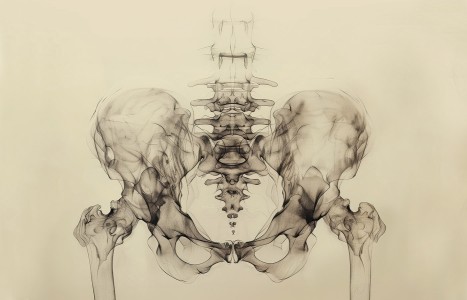People today want convenience, whether it be from their bank, credit card, favorite retail store, or restaurant. They demand it from the companies who hold their loyalty, including their health care providers (you). They don’t want to call and possibly be put on hold, and they want to use an app or schedule an appointment on your website. Here are three reasons your practice can gain by switching to online appointment scheduling.
Intentional Points
- It is not uncommon for clinicians and students alike to either fall into a rut using the same acupuncture points over and over in clinical autopilot, or use too many points during treatment.
- In my experience, the deeply focused use of two to four acupuncture points is more effective than the application of a large, unfocused “shotgun” collection of points.
- This distillation effect of choosing 2-3 or 3-4 points can only occur if the clinician has cultivated yi or focused mind-awareness on the present clinical encounter; and has a thorough knowledge of acupuncture points and how each point can be uniquely applied.
I often write about the use of minimal acupuncture point selection to achieve a more focused therapeutic vector. It is not uncommon for clinicians and students alike to either fall into a rut using the same acupuncture points over and over in clinical autopilot, or use too many points during treatment, resulting in what I often term a “fuzzy” or “cloudy” clinical outcome. The goal of this article is to help avoid these frustrations.
When More Is Less
It is important to note there is no perfect formula when determining which specific points / number of points will shift a patient’s pattern of disharmony and suffering. However, I have seen acupuncture point prescriptions with a shocking amount of acupuncture points used, such as 10-15 points administered bilaterally. In my clinical experience, when acupuncture point prescriptions begin to morph into such a large collection of points, I often see cloudy or unclear clinical intent. (I specifically use the word intent; however, I could have termed this situation unclear clinical focus.)
“Intent” strongly suggests the important concept of yi or clear, focused awareness / intelligence referenced in Chinese medicine and qi gong. As a sifu / teacher and practitioner of qi gong, I frequently mention that it is more effective to practice two to three simple qi gong forms with strong, focused intent, emphasizing the importance of yi, than to memorize 10-20 forms and practice without focus or intent – and expect more powerful results due to “more action.”
This concept of nuanced simplicity framed with an atmosphere saturated with yi has deep clinical connections to the practice of acupuncture.
In my experience, the deeply focused use of two to four acupuncture points is more effective than the application of a large, unfocused “shotgun” collection of points. Keeping the awareness calm and focused on the clinical encounter is key for achieving efficacy in the nuanced approach as well.
Perhaps the most important step is cultivating a calm and focused awareness while listening to the patient’s unique, subjective experiences. Listening with focus and intent allows the practitioner to clearly see – and on some level experience – the unique “atmosphere” of the patient. This atmosphere expresses all the nuances which allow clinicians to craft unique acupuncture point selections to effectively “treat the patient, not the disease.”
“Alchemical Distillation of Points”
When referencing yi and the selection of acupuncture points, I frequently phrase this as an “alchemical distillation of points.” After focused listening to the patient and a focused examination of objective clinical signs, the clinician has a vast amount of acupuncture points to consider. This can be overwhelming.
When the practitioner focuses on and establishes a clear clinical evaluation of the patient, the focus / intent then moves to the choice of acupuncture points to create an effective point prescription. This is where the alchemical distillation of point selection occurs.
This distillation effect of choosing 2-3 or 3-4 points can only occur if:
- The clinician has cultivated yi or focused mind-awareness on the present clinical encounter
- The clinician has a thorough knowledge of acupuncture points and how each point can be uniquely applied
A Point a Day...
This latter point emphasizes how important it is for clinicians to continuously study and hone their knowledge of acupuncture; and not fall into the clinical rut of using the same acupuncture points over and over ad nauseum. Of course, we all use many of the same acupuncture points, as many of these points are highly effective; however, there are countless highly effective points that are frequently overlooked due to a basic lack of knowledge.
I always recommend students and practitioners choose a different acupuncture point each day and spend time contemplating on the unique functions / actions of each point. This practice can be a cultivation of the yi and a deepening of one’s clinical expertise. Make this a daily practice – perhaps choosing a different meridian each month.
If the practitioner possesses a thorough knowledge of acupuncture, then when examining all the possible options for therapeutic application, a moment can be taken to calm and focus the intent to “alchemically distill” all the options down to 2-3 or 3-4 acupuncture points. This clinical distillation can only occur when the practitioner’s yi is cultivated, and the mind is calm and focused on the present moment.
The reality of the clinical encounter can be an important inspiration for the daily practice of acupuncture point contemplation and then taking the ideas born from daily study into the “real world” of the suffering patient.
A Final Consideration
A final point to address is the use of clear, focused intent at the moment of needle insertion and the moment of needle manipulation. The practitioner should always calm and clear the mind at the moment of needle insertion. Know clearly why the specific point is chosen and the intent of its action and use. This focused awareness while needling is often the fundamental reason why a point “works” or does not “work.”
A few acupuncture points, needled with clear intent, can exert an extremely focused therapeutic action; one that can often be shocking to practitioners and patients not used to such slow, focused application. However, a clear, focused mind can be the root of deep transformation – and when linked to an acupuncture needle, it can indeed facilitate the “alchemy of healing.”



